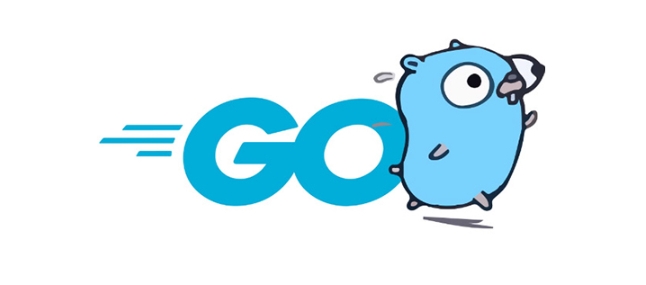Building Performant Go Clients for Third-Party APIs
Use a dedicated and reasonably configured HTTP client to set timeout and connection pools to improve performance and resource utilization; 2. Implement a retry mechanism with exponential backoff and jitter, only retry for 5xx, network errors and 429 status codes, and comply with Retry-After headers; 3. Use caches for static data such as user information (such as sync.Map or Redis), set reasonable TTL to avoid repeated requests; 4. Use semaphores or rate.Limiter to limit concurrency and request rates to prevent current limit or blocking; 5. Encapsulate the API as an interface to facilitate testing, mocking, and adding logs, tracking and other middleware; 6. Monitor request duration, error rate, status code and retry times through structured logs and indicators, and observeability is achieved in combination with OpenTelemetry or Prometheus; in summary, building a high-performance Go client requires comprehensive configuration, retry, cache, current limit, abstraction and monitoring to ensure that the system is efficient, stable and maintainable.

When building Go applications that consume third-party APIs, performance and reliability are critical—especially at scale. A poorly designed client can lead to slow response times, excessive resource usage, or even service outages due to rate limiting or timeouts. Here's how to build efficient, robust, and maintainable Go clients for external APIs.

1. Use a Dedicated HTTP Client with Proper Configuration
The default http.Client in Go is convenient but often misused. To build a performant client, configure it explicitly:
client := &http.Client{
Timeout: 10 * time.Second,
Transport: &http.Transport{
MaxIdleConns: 100,
MaxConnsPerHost: 50,
MaxIdleConnsPerHost: 50,
IdleConnTimeout: 90 * time.Second,
},
}Why this matters:

- Timeouts prevent hanging requests from consuming resources.
- Connection pooling (via
MaxIdleConnsPerHost) reuses TCP connections, reducing latency and overhead. - Without tuning, you risk exhausting file descriptors or suffering from slow connection setup.
Use this client across your API wrapper—don't create a new one per request.
2. Implement Retry Logic with Backoff
Third-party APIs fail. Network glitches, rate limits, and server errors happen. Handle them gracefully with retry logic.

Use exponential backoff with jitter to avoid thundering herds:
import "github.com/cenkalti/backoff/v4"
err := backoff.Retry(func() error {
resp, err := client.Do(req)
if err != nil {
return err // retryable
}
defer resp.Body.Close()
if resp.StatusCode == http.StatusTooManyRequests {
return fmt.Errorf("rate limited")
}
if resp.StatusCode >= 500 {
return fmt.Errorf("server error: %d", resp.StatusCode)
}
return nil // success, don't retry
}, backoff.WithMaxRetries(backoff.NewExponentialBackOff(), 3))Best practices:
- Only retry on transient errors (5xx, network issues, 429).
- Respect
Retry-Afterheaders when present. - Avoid retrying on 4xx errors (except 429).
3. Cache Responses When Appropriate
If the API returns relatively static data (eg, user profiles, product info), caching can drastically reduce latency and load.
Use an in-memory cache like sync.Map or a library like groupcache or bigcache for larger datasets:
var cache = struct {
sync.RWMutex
m map[string]cachedResponse
}{m: make(map[string]cachedResponse)}
func GetUserData(id string) (*User, error) {
cache.RLock()
if val, ok := cache.m[id]; ok && time.Since(val.time) < 5*time.Minute {
cache.RUnlock()
return val.user, nil
}
cache.RUnlock()
// Fetch from API...
user, err := fetchFromAPI(id)
if err != nil {
return nil, err
}
cache.Lock()
cache.m[id] = cachedResponse{user: user, time: time.Now()}
cache.Unlock()
return user, nil
}Considerations:
- Cache only ideal GET requests.
- Set TTLs based on data volatile.
- For distributed systems, consider Redis or similar.
4. Limit Concurrency and Throttle Requests
Even with retries and timeouts, flooding an external API can get you rate-limited or bannered.
Use a semaphore to limit concurrent requests:
import "golang.org/x/sync/semaphore"
sem := semaphore.NewWeighted(10) // max 10 concurrent requests
for _, req := range requests {
if err := sem.Acquire(ctx, 1); err != nil {
break
}
go func(r *http.Request) {
defer sem.Release(1)
// make request
}(req)
}Alternatively, use a rate limiter:
import "golang.org/x/time/rate"
limiter := rate.NewLimiter(rate.Every(time.Second), 10) // 10 req/s
for _, req := range requests {
if err := limiter.Wait(ctx); err != nil {
return err
}
// make request
}Tip: Combine both for APIs with burst and sustained rate limits.
5. Structure Your Client for Reusability and Testing
Wrap the API in a clean interface:
type APIClient interface {
GetUser(ctx context.Context, id string) (*User, error)
UpdateUser(ctx context.Context, user *User) error
}
type Client struct {
baseURL string
httpClient *http.Client
limiter *rate.Limiter
}
func (c *Client) GetUser(ctx context.Context, id string) (*User, error) {
if err := c.limiter.Wait(ctx); err != nil {
return nil, err
}
req, err := http.NewRequestWithContext(ctx, "GET", c.baseURL "/users/" id, nil)
if err != nil {
return nil, err
}
resp, err := c.httpClient.Do(req)
// handle response...
}This makes it easy to:
- Mock the client in tests.
- Swap implementations.
- Add middleware (logging, tracing, metrics).
6. Monitor and Log for Observability
Add structured logging and metrics:
import "log/slog"
slog.Info("api_request", "method", "GET", "url", req.URL.Path, "duration", time.Since(start))Track:
- Request duration
- Error rates
- HTTP status codes
- Retry counts
Use OpenTelemetry or Prometheus for deeper insights.
Building a performant Go client isn't just about speed—it's about resilience, efficiency, and observability. By tuning HTTP settings, adding retries and rate limiting, caching wisely, and designing cleanly, you create clients that are fast, stable, and easy to maintain.
Basically: don't call APIs barefoot. Put on some middleware, set some limits, and always plan for failure.
The above is the detailed content of Building Performant Go Clients for Third-Party APIs. For more information, please follow other related articles on the PHP Chinese website!

Hot AI Tools

Undress AI Tool
Undress images for free

Undresser.AI Undress
AI-powered app for creating realistic nude photos

AI Clothes Remover
Online AI tool for removing clothes from photos.

Clothoff.io
AI clothes remover

Video Face Swap
Swap faces in any video effortlessly with our completely free AI face swap tool!

Hot Article

Hot Tools

Notepad++7.3.1
Easy-to-use and free code editor

SublimeText3 Chinese version
Chinese version, very easy to use

Zend Studio 13.0.1
Powerful PHP integrated development environment

Dreamweaver CS6
Visual web development tools

SublimeText3 Mac version
God-level code editing software (SublimeText3)
 How do you work with environment variables in Golang?
Aug 19, 2025 pm 02:06 PM
How do you work with environment variables in Golang?
Aug 19, 2025 pm 02:06 PM
Goprovidesbuilt-insupportforhandlingenvironmentvariablesviatheospackage,enablingdeveloperstoread,set,andmanageenvironmentdatasecurelyandefficiently.Toreadavariable,useos.Getenv("KEY"),whichreturnsanemptystringifthekeyisnotset,orcombineos.Lo
 How to create and use custom error types in Go
Aug 11, 2025 pm 11:08 PM
How to create and use custom error types in Go
Aug 11, 2025 pm 11:08 PM
In Go, creating and using custom error types can improve the expressiveness and debugability of error handling. The answer is to create a custom error by defining a structure that implements the Error() method. For example, ValidationError contains Field and Message fields and returns formatted error information. The error can then be returned in the function, detecting specific error types through type assertions or errors.As to execute different logic. You can also add behavioral methods such as IsCritical to custom errors, which are suitable for scenarios that require structured data, differentiated processing, library export or API integration. In simple cases, errors.New, and predefined errors such as ErrNotFound can be used for comparable
 How to implement a generic LRU cache in Go
Aug 18, 2025 am 08:31 AM
How to implement a generic LRU cache in Go
Aug 18, 2025 am 08:31 AM
Use Go generics and container/list to achieve thread-safe LRU cache; 2. The core components include maps, bidirectional linked lists and mutex locks; 3. Get and Add operations ensure concurrency security through locks, with a time complexity of O(1); 4. When the cache is full, the longest unused entry will be automatically eliminated; 5. In the example, the cache with capacity of 3 successfully eliminated the longest unused "b". This implementation fully supports generic, efficient and scalable.
 How do you handle signals in a Go application?
Aug 11, 2025 pm 08:01 PM
How do you handle signals in a Go application?
Aug 11, 2025 pm 08:01 PM
The correct way to process signals in Go applications is to use the os/signal package to monitor the signal and perform elegant shutdown. 1. Use signal.Notify to send SIGINT, SIGTERM and other signals to the channel; 2. Run the main service in goroutine and block the waiting signal; 3. After receiving the signal, perform elegant shutdown with timeout through context.WithTimeout; 4. Clean up resources such as closing database connections and stopping background goroutine; 5. Use signal.Reset to restore the default signal behavior when necessary to ensure that the program can be reliably terminated in Kubernetes and other environments.
 How do you define and call a function in Go?
Aug 14, 2025 pm 06:22 PM
How do you define and call a function in Go?
Aug 14, 2025 pm 06:22 PM
In Go, defining and calling functions use the func keyword and following fixed syntax, first clarify the answer: the function definition must include name, parameter type, return type and function body, and pass in corresponding parameters when calling; 1. Use funcfunctionName(params) returnType{} syntax when defining functions, such as funcadd(a,bint)int{return b}; 2. Support multiple return values, such as funcdivide(a,bfloat64)(float64,bool){}; 3. Calling functions directly uses the function name with brackets to pass parameters, such as result:=add(3,5); 4. Multiple return values can be received by variables or
 Performance Comparison: Java vs. Go for Backend Services
Aug 14, 2025 pm 03:32 PM
Performance Comparison: Java vs. Go for Backend Services
Aug 14, 2025 pm 03:32 PM
Gotypicallyoffersbetterruntimeperformancewithhigherthroughputandlowerlatency,especiallyforI/O-heavyservices,duetoitslightweightgoroutinesandefficientscheduler,whileJava,thoughslowertostart,canmatchGoinCPU-boundtasksafterJIToptimization.2.Gouseslessme
 Parsing RSS and Atom Feeds in a Go Application
Aug 18, 2025 am 02:40 AM
Parsing RSS and Atom Feeds in a Go Application
Aug 18, 2025 am 02:40 AM
Use the gofeed library to easily parse RSS and Atomfeed. First, install the library through gogetgithub.com/mmcdole/gofeed, then create a Parser instance and call the ParseURL or ParseString method to parse remote or local feeds. The library will automatically recognize the format and return a unified feed structure. Then iterate over feed.Items to get standardized fields such as title, link, and publishing time. It is also recommended to set HTTP client timeouts, handle parsing errors, and use cache optimization performance to ultimately achieve simple, efficient and reliable feed resolution.
 How to build a simple web server in golang
Aug 18, 2025 am 06:17 AM
How to build a simple web server in golang
Aug 18, 2025 am 06:17 AM
Yes, using Go's net/http package, you can easily build a simple web server. You just need to import the net/http package and call http.ListenAndServe(":8080",nil) to start the server. Register the routing processing function through http.HandleFunc, supports multi-path response, query parameter processing, and static file services. You can also achieve timeout control and elegant closure through custom http.Server. The entire process does not require third-party dependencies, which is suitable for quickly building lightweight web services.







